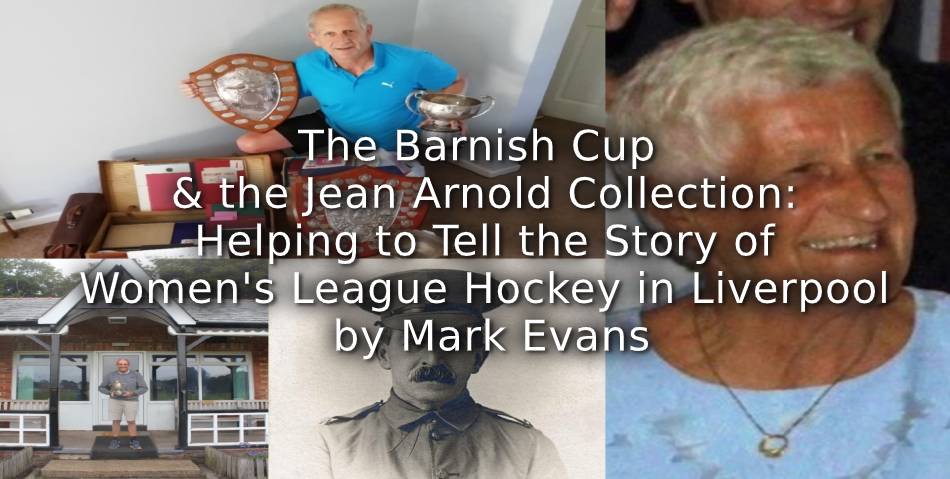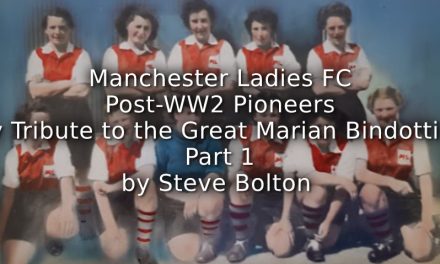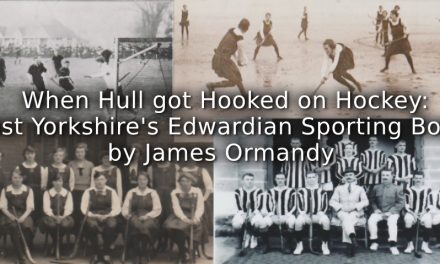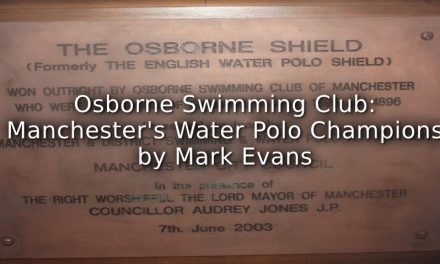A lot of things have been different during lockdown, and many people have had clear outs. Two really interesting donations to the Hockey Museum during this time are now helping to uncover more of the once hidden history of women’s league hockey.
The first was from Formby Hockey Club on the Wirral. Marc Bourhill contacted the Museum and said that during a clear out of one of the outbuildings at the club he had found a cup called the Barnish Cup. Luckily, Marc is a hockey coach and realised the Cup was of some importance, otherwise it may have been lost for ever. He wondered if the Museum would be interested in adding it to their collection.
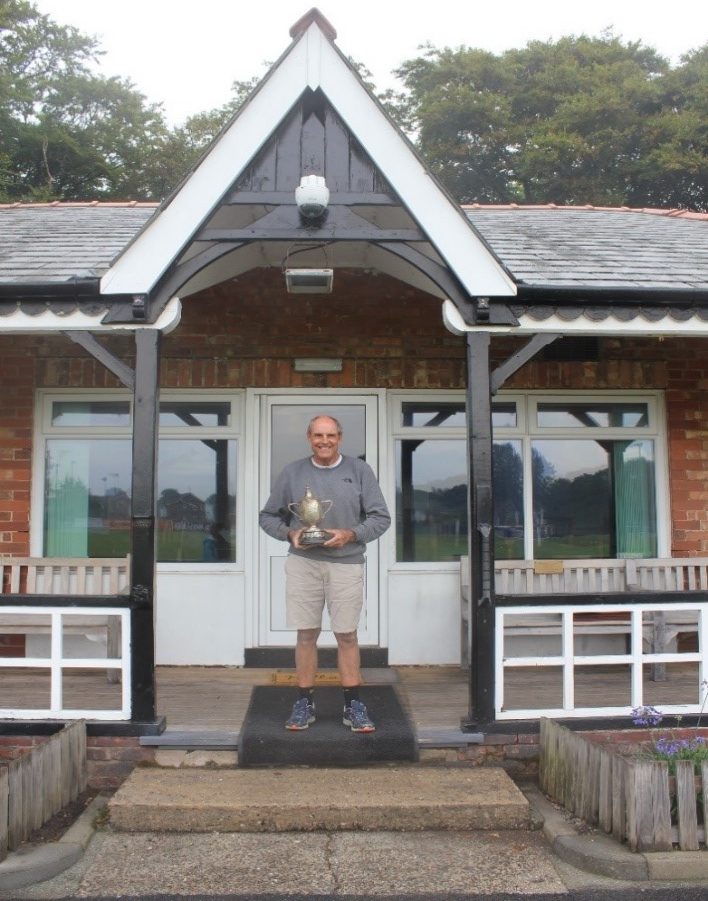
Marc Bourhill outside the Formby Clubhouse with the Barnish Cup
The cup stands 35 cm high and is engraved with the following inscription,
THE
“BARNISH” CUP
PRESENTED BY
C.W.BARNISH ESQ
TO THE
LIVERPOOL LADIES
HOCKEY LEAGUE
1926
DIVISION III
Marc did not know anything about the cup and so after some research it was discovered that C. W. Barnish was Croudson William Barnish, a manager at the Port Sunlight works, part of the Lever Brothers group. At one time Port Sunlight had three teams in the Liverpool Ladies Hockey League and from the inscription it appeared the cup was played for by teams in the third division of the League. It was common feature of sports leagues at the time for local dignitaries to present cups and shields to leagues.
The Museum were delighted with the find and were grateful to Marc for the donation but the story did not end there.
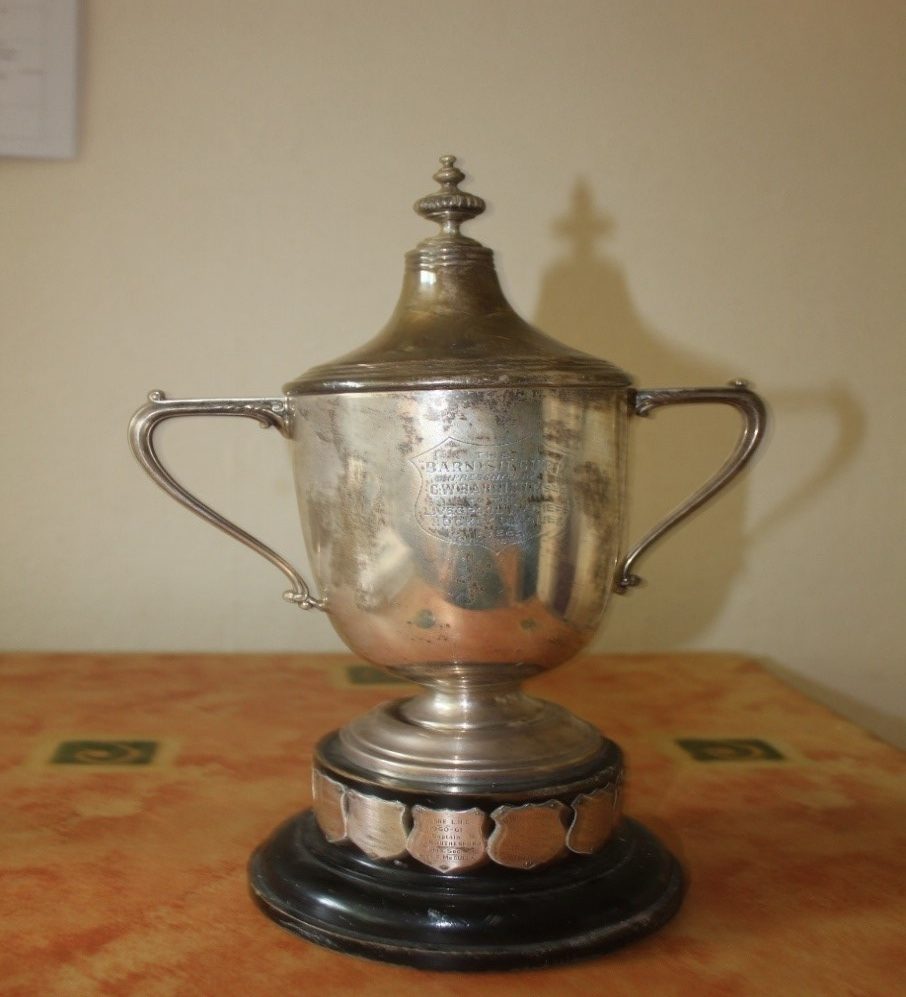
The Barnish Cup, donated by Croudson William Barnish in 1926 for the winners of division 3 in the Liverpool Ladies’ Hockey League
It was not clear why Formby had the Cup. The last winners shown on the cup, Hilbre L.H.C., were winners in the 1960 – 61 season. Formby did not join the league until the late 1980s so it was a bit of a mystery. To try and answer this question and to find out more about the cup and the Liverpool Ladies League, Marc contacted Jean Arnold, a well-known figure in Liverpool hockey circles. This contact led to Jean uncovering a number of other items relating to the Liverpool Ladies League and to Liverpool Ladies Hockey Club. The items were kindly donated to the Hockey Museum by Jean, and along with the Barnish Cup will now help to tell some of the story of the Liverpool Ladies League, one of the most important hockey leagues in the country. The collection also helped answer the question of how Formby had the Barnish Cup.
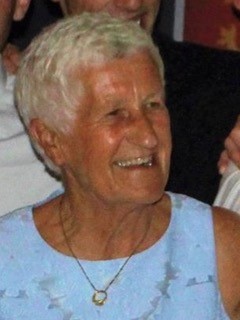
Jean Arnold
The items were collected from Liverpool by Hockey Museum volunteer, Mark Evans who is currently researching women’s hockey leagues for the Museum. Currently he is aware of 33 women’s leagues in existence in England in the early 20th Century, when for many years, it was thought women’s league hockey was not played. Many of the leagues were based in the Northern industrial towns such as Manchester, Leeds, Sheffield, Bradford and Liverpool. In fact, there were two women’s leagues in Liverpool, the Liverpool Ladies’ Hockey League and the Liverpool Union of Girls Clubs League.
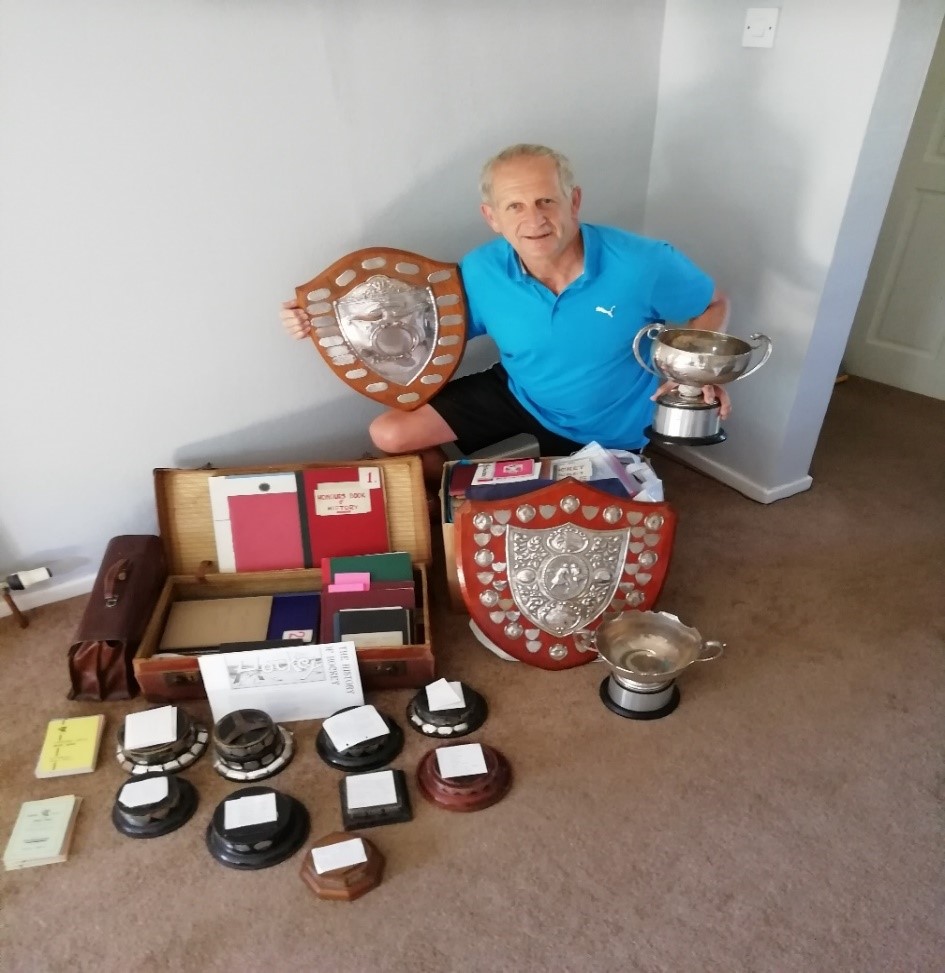
Mark Evans, holding The Lord Mayor’s Cup and the Liverpool Ladies Challenge Shield, with the items donated by Jean Arnold
The items Jean donated included a number of League minute books, League handbooks, cup bases, cups, shields and secretary’s reports relating to the Liverpool Ladies League, an assortment of items relating to the history of Liverpool Ladies Hockey Club and various other hockey memorabilia including festival and international programmes. Although it will take some time to look through all the items a number of facts are emerging to help Mark uncover the history of the League.
The collection confirms the Liverpool Ladies League was founded in 1918 by John Lishman, a major driving force in promoting women’s league hockey in the Lancashire area. Lishman, was secretary of the League from 1918 until 1936 and helped to create the English Ladies Hockey Leagues Association (E.L.H.L.A.) in 1932, an Association set up to help look after the interests of women’s leagues. The founding members of the League are recorded as, Arundell High School Old Girls, Birkenhead Secondary School Old Girls, Cambridge Ladies (Waterloo), Holt Secondary School Old Girls (Lishman’s team), New Brighton Ladies, Southport Wesleyans and Wallasey.
It seems that the League’s most successful period was just before the Second World War. A note in the book entitled ‘Honours Book and History’ states that in 1939 the League had 8 divisions. Divisions 1 to 4 consisted of 10 clubs each, division 5, 6 and 7 contained 12 clubs each and division 8 had 14 clubs. A grand total of 96 clubs with 1,652 registered players. There was also a Wednesday League consisting of 6 teams. The entry notes that for the 1939 – 40 season 7 new clubs had applied to join.
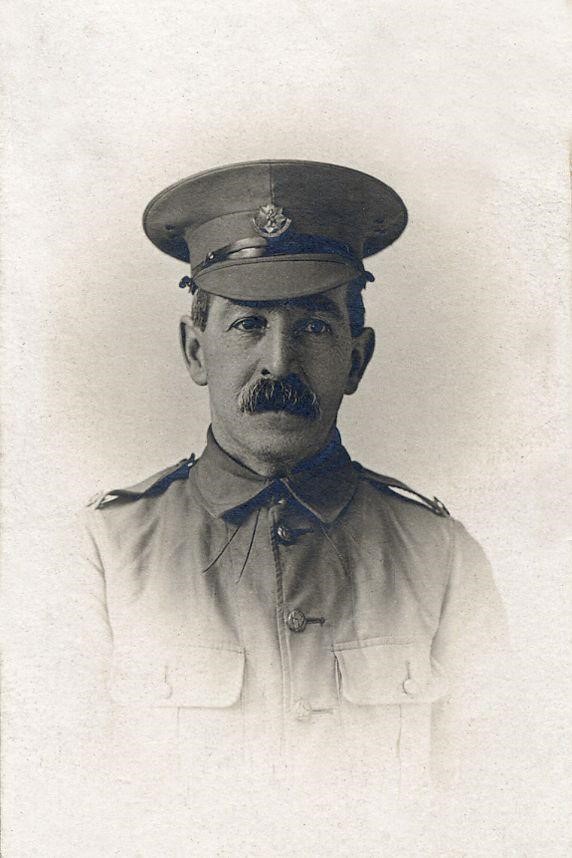
John Lishman, the founder of the Liverpool Ladies’ Hockey League and the driving force behind setting up the English Ladies Hockey Leagues Association (E.L.H.L.A.)
The picture of the collection shows Mark holding ‘The Lord Mayor’s Cup’ which was presented to the League by Burton Eills, the Lord Mayor of Liverpool in 1918/9 and was presented to the League Champions. Eills was the league’s president from 1922 to 1934. The Cup must be one of the oldest women’s hockey league trophies still in existence. The Cup is engraved with the following;
The Lord Mayor’s Cup
Presented by
BURTON EILLS, ESQ., JP
Lord Mayor of Liverpool
1919-1920
To the Liverpool County
Ladies Hockey League
(affiliated to the A.E.W.H.A.)
Division 1
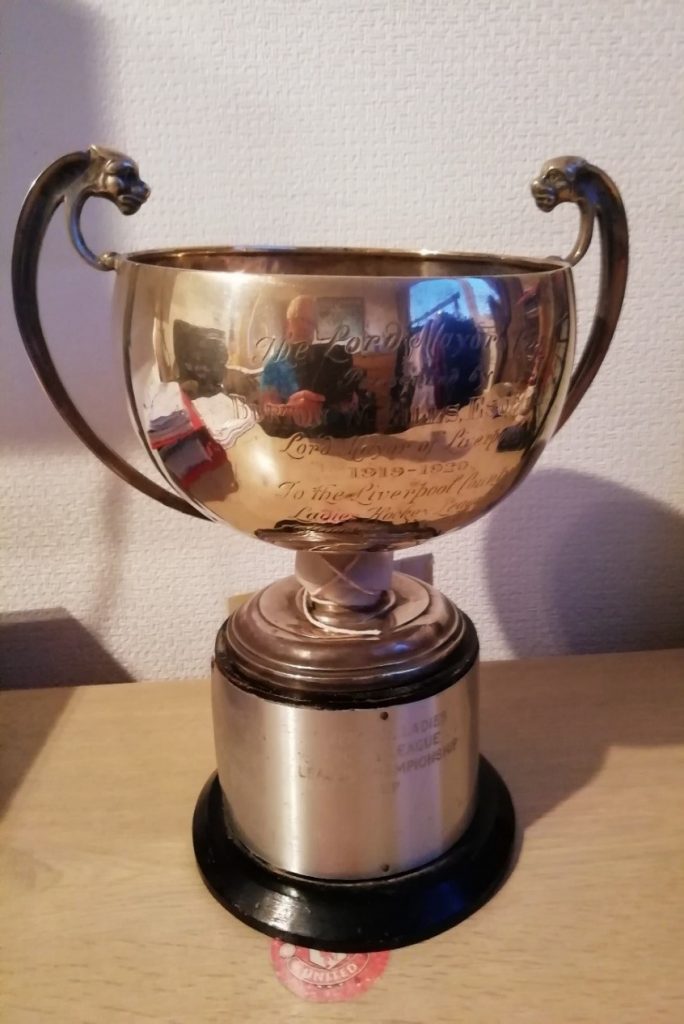
The Lord Mayor’s Cup
Source: Jean Arnold Collection
The engraving confirms that in the 1919 – 1920 season the League was affiliated to the All England Women’s Hockey Association (A.E.W.H.A.), which since its inception in 1895, was the ruling body of women’s hockey and was not in favour of Leagues. However, after the First World War, the number of clubs affiliated to the Association was in decline and the leagues were growing in popularity. Was the Association, by allowing the leagues to join, attempting to build bridges with them and gain some kind of control to protect the Association’s role as the sole governing body of women’s hockey? We may never fully know the answer to this but it is interesting to speculate.
Mark is also holding the Liverpool Ladies Challenge Shield, presented by Benjamin Johnson, which was used for the Wednesday League and then competed for at the end of the season tournament. Benjamin Johnson was the League’s first president serving from 1918 to 1922.
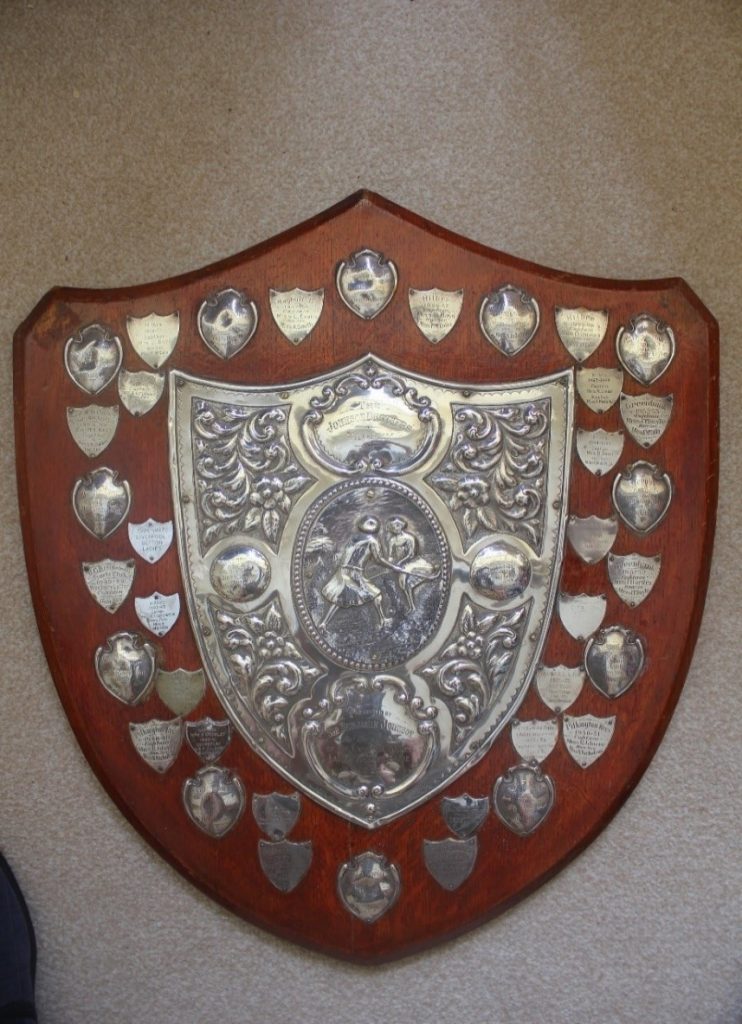
The Johnson Brothers Trophy presented by Sir Benjamin Johnson in 1923
Source: Jean Arnold Collection
The Johnson Brothers Trophy presented by Sir Benjamin Johnson in 1923 (Jean Arnold Collection)
Johnson also presented a second shield, called The Johnson Brothers Trophy. The shield is engraved with the following.
PRESENTED BY
SIR BENJAMIN JOHNSON
For Division V
OF THE LIVERPOOL COUNTY
LADIES HOCKEY LEAGUE
1923
It is believed Johnson was one of the owners of Johnson Dyers. A company that eventually became “Johnson’s the Cleaners”. Johnsons had teams playing in the Liverpool League and like with Barnish and Port Sunlight, I am sure presenting a trophy to the League was good publicity for the company and increased his populariy with the women hockey players of Johnson’s.
It is interesting to note that on both the Lord Mayor’s Cup and the Johnson Brothers Trophy the League is refered to as the ‘Liverpool County Ladies Hockey League’. However on the 1961-62 handbook the word ‘County’ is not there. Is the word ‘County’ used as a result of the Liverpool League joining the A.E.W.H.A.? We know the A.E.W.H.A. imposed a number of regulations on the leagues who joined from 1919 onwards.In fact, it was these regulations which, along with other issues, eventually led to Lishman and others forming the E.L H.L.A. Was the word ‘County’ a word the A.E.W.H.A. insisted the League use to make them seem less like a league? Again, this is a question we may never know the answer to.
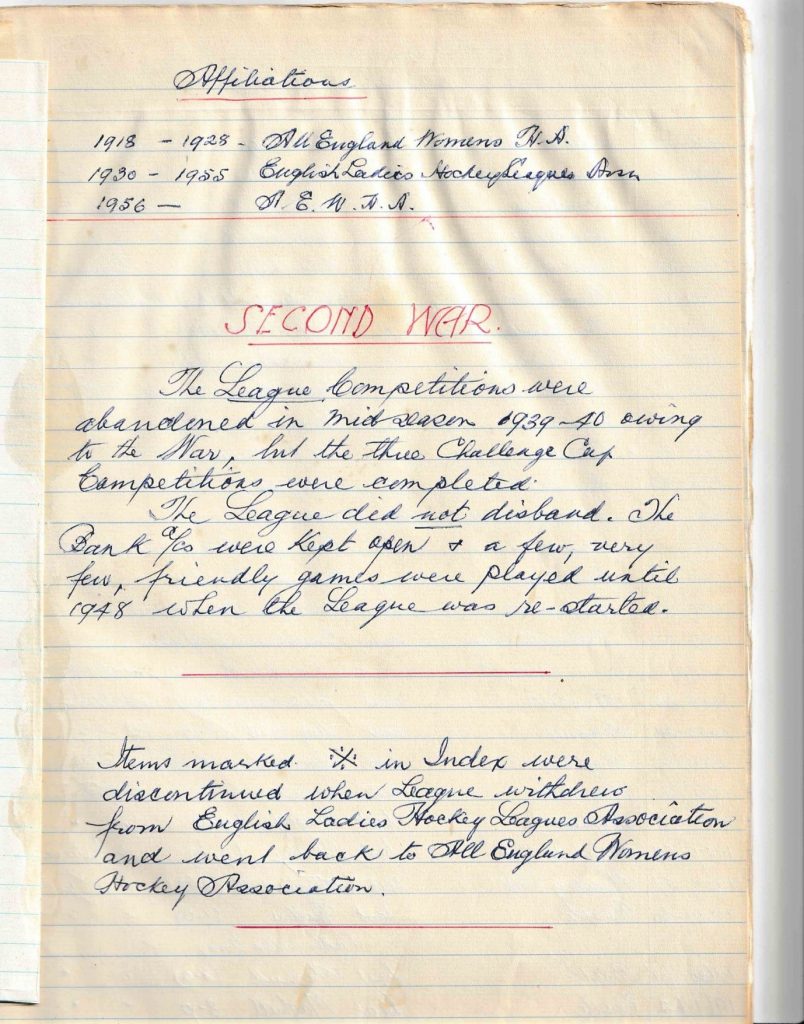
A page from a book entitled ‘Honours Book and History’
Source: Jean Arnold Collection
The book ‘Honours Book and History’ shows the League was affiliated to the A.E.W.H.A. from 1918 to 1928. Then, from 1930 to 1955 to the E.L.H.L.A. (This must be an error as the E.L.H.L.A. was only formed in 1932.) The League then re-joined the A.E.W.H.A. in 1956. Leaving the E.L.H.L.A. must have been a bit of a wrench for the League because of John Lishman connection. Looking at the minute book from 1955 (also in the collection) it records the League was having problems contacting the E.L.H.L.A. secretary and there is the hint of dissatisfaction with the Association. This was perhaps an indication that the Association was in trouble and by the early 60’s the Association was to fold.
The book also shows that the League was abandoned in mid-season in 1939 -40 due to the Second World War and did not re-start until 1948. Although it notes there were a few friendlies played and the League’s bank account was kept open!
The collection also answered Marc’s question of why Formby had the Barnish Cup. When the number of teams in the league reduced and the league could no longer run three leagues, the cup was reassigned. On looking through reports of the hon secretary of the League in the report for the 1959 – 60 season I found the following information in relation to the Barnish Cup and another Cup the Sturla Cup.
‘Another new item which was successful, and went down well with the clubs, was the idea put forward regarding the Barnish and Sturla cups, held by the League, when one division came into being at the start of the season. It was felt that clubs should have the benefit of these cups rather than they be kept in cold storage. Each club had the opportunity to discuss these idea, and agreed that the Barnish Cup be awarded to the team that had shown the biggest improvement this season on last, which went deservedly to Lucem. The Sturla cup was to be awarded to the team that had shown ‘All-round General Sportmanship’ during the season. Every club that took part in the Annual Tournament voted on this, and to Mossley Hill went the honour of being voted that team by the other club.’
The Barnish Cup was later reassigned again and used as a cup played for in the League’s end of season tournaments. Formby, by the 1990s, were one of more successful teams in the League and were probably the last team to win the Cup at one of the League’s end of season tournaments in the 1990’s. So providing an explanation to why the cup was found at Formby Hockey Club.
The Johnson Brothers Trophy was used for other things too. When the league restarted in 1948 it was used as the runners-up trophy for the Senior League. In 1953 it was used for the Junior League Championship and then two years later it was again used for the runners-up trophy for the Senior League.
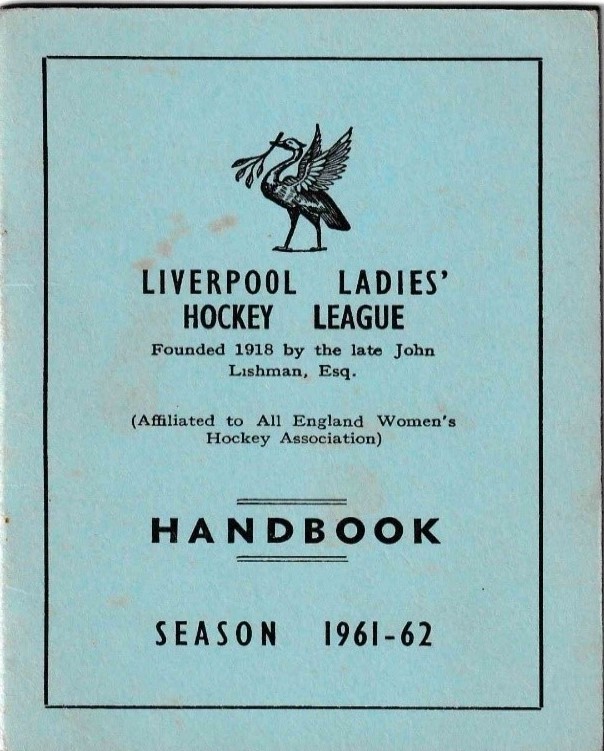
Liverpool Ladies’ Hockey League 1961-62 Handbook
There was been very little written about Ladies League hockey but we are now beginning to discover and understand the importance and impact that women’s hockey leagues had on the game of hockey. The setting up of the leagues provided girls and women, who otherwise would probably not have had the chance, the opportunity to play the game. It is a fascinating history and donations like Jean’s and Marc’s go a long way to help to tell the story of this forgotten part of hockey’s history.
I wonder how many other items have been discovered during lockdown and also fear, unfortunately, that some may have been disposed of and lost forever.

